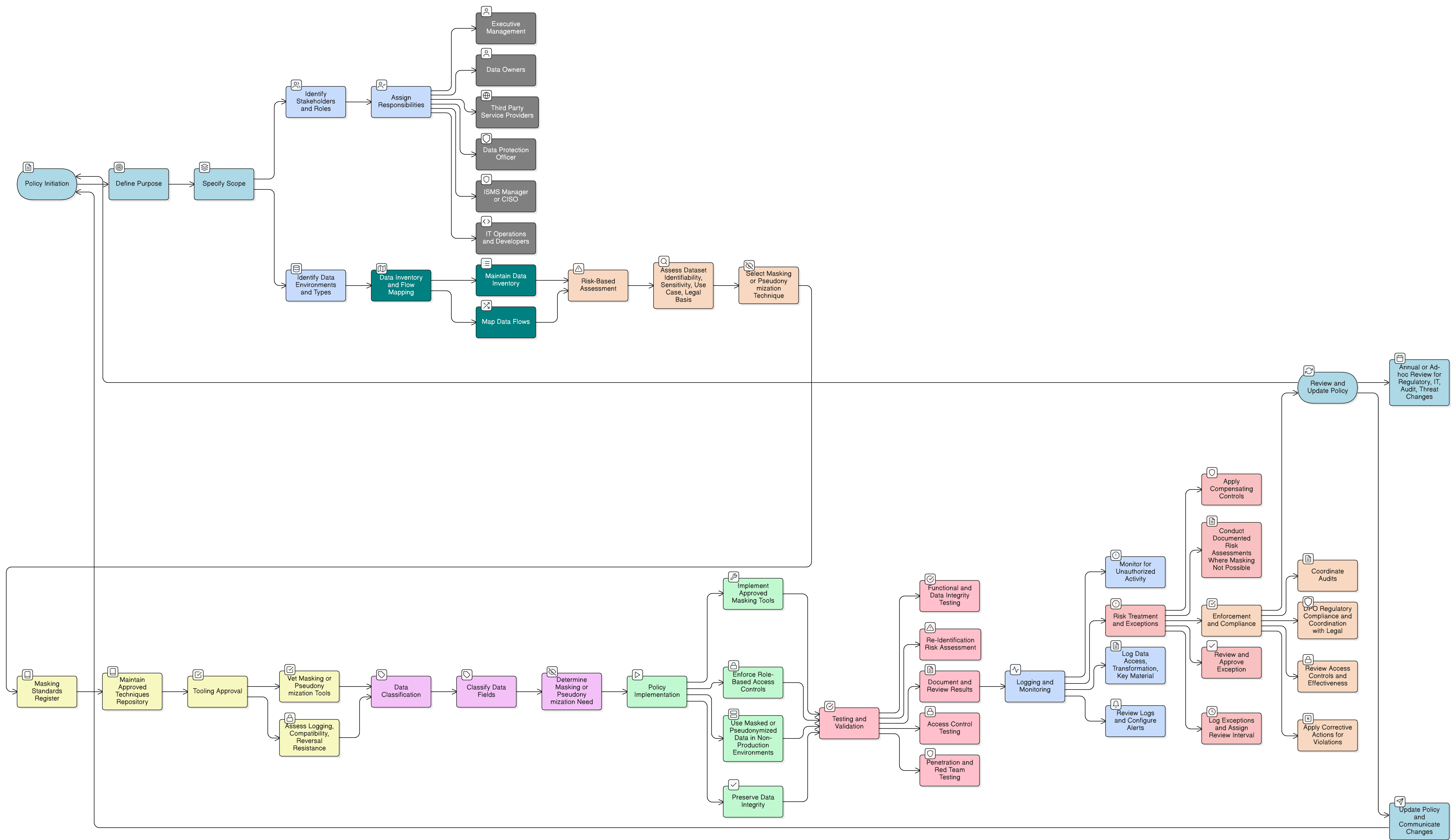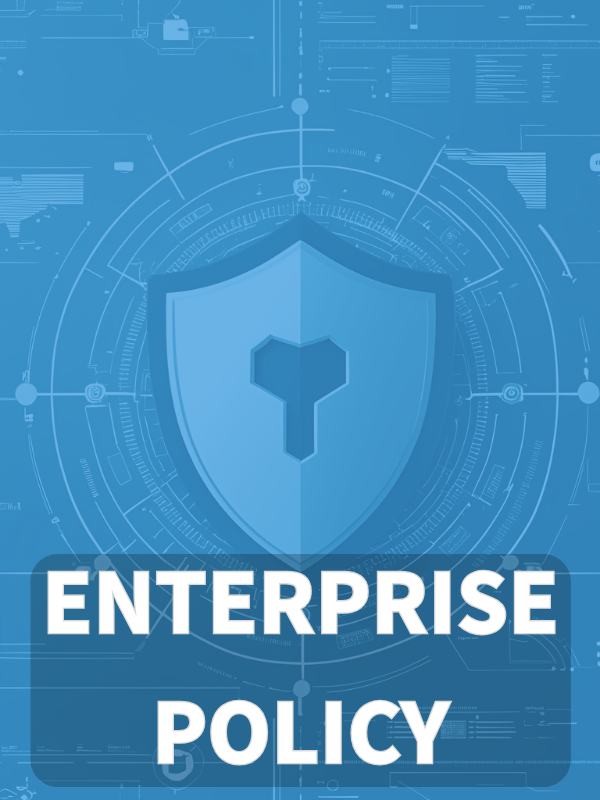Overview
This policy defines strict requirements for masking and pseudonymizing sensitive, confidential, and personal data to limit exposure and support regulatory compliance across all environments and roles.
Comprehensive Data Protection
Applies masking and pseudonymization to all sensitive data across environments for enhanced privacy and minimized exposure.
Regulatory Alignment
Supports GDPR, ISO/IEC 27001:2022, NIST, NIS2, DORA, and COBIT 2019, ensuring legal and standards-based compliance.
Structured Responsibilities
Defines clear roles for management, CISO, DPO, data owners, IT, and third parties in data masking and pseudonymization.
Continuous Monitoring
Mandates ongoing testing, audit, and monitoring to validate masking effectiveness and identify risks or anomalies.
Read Full Overview
Policy Diagram

Click diagram to view full size
What's Inside
Scope and Applicability
Governance and Roles
Risk-Based Assessment Procedures
Tooling and Masking Standards
Logging and Monitoring Controls
Testing and Exception Handling
Framework Compliance
🛡️ Supported Standards & Frameworks
This product is aligned with the following compliance frameworks, with detailed clause and control mappings.
Related Policies
Data Classification And Labeling Policy
Masking and pseudonymization decisions are directly dependent on the classification of data fields and sensitivity levels defined in P13.
Data Retention And Disposal Policy
Transformed datasets must be retained and disposed of in accordance with lifecycle rules in P14, ensuring masked and pseudonymized data is treated as sensitive.
Data Protection And Privacy Policy
Provides privacy principles and regulatory foundations for applying pseudonymization as a compliant processing activity under GDPR and similar laws.
Logging And Monitoring Policy
Enables centralized auditing and alerting of masking and pseudonymization events in accordance with structured security monitoring protocols.
About Clarysec Policies - Data Masking and Pseudonymization Policy
Effective security governance requires more than just words; it demands clarity, accountability, and a structure that scales with your organization. Generic templates often fail, creating ambiguity with long paragraphs and undefined roles. This policy is engineered to be the operational backbone of your security program. We assign responsibilities to the specific roles found in a modern enterprise, including the CISO, IT Security, and relevant committees, ensuring clear accountability. Every requirement is a uniquely numbered clause (e.g., 5.1.1, 5.1.2). This atomic structure makes the policy easy to implement, audit against specific controls, and safely customize without affecting document integrity, transforming it from a static document into a dynamic, actionable framework.
Centralized Masking Standards Register
Maintains a repository of approved masking and pseudonymization tools, templates, and methods for consistent enterprise-wide implementation.
Risk-Based Transformation Assessment
Requires every dataset to undergo identifiability, re-identification, and use-case risk analysis before applying masking or pseudonymization.
Exception Management & Compensating Controls
Mandates documented risk assessment and management review for exceptions, ensuring compensating controls and ongoing oversight.
Frequently Asked Questions
Built for Leaders, By Leaders
This policy was authored by a security leader with 25+ years of experience deploying and auditing ISMS frameworks for global enterprises. It's designed not just to be a document, but a defensible framework that stands up to auditor scrutiny.
